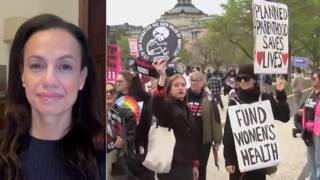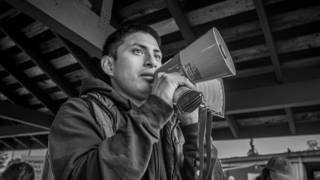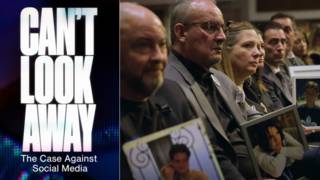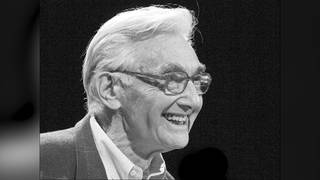
Guests
- Nesreenmiddle school teacher of Romance literature in a Baghdad school for young women.
- Bruce Wallaceretired Brooklyn high school teacher and member of Sept. 11 Families for Peaceful Tomorrows. After the U.S. invasion of Iraq, he began 121 Contact to establish correspondence between his students and their Iraqi counterparts.
Links
Three years ago, Brooklyn school teacher Bruce Wallace created a project to teach students about the people on the “other side” of the Iraqi War and to create a peace bridge between the two sides. For years, Wallace and Iraqi Romance literature teacher Nesreen, as well as their students, corresponded by email. The Americans and Iraqis exchanged emails about their lives, war and growing up in Brooklyn and Baghdad. Bruce Wallace and Nesreen join us in our firehouse studio. [includes rush transcript]
Transcript
JUAN GONZALEZ: Three years ago, a Brooklyn school teacher created a project to connect his students with Iraqi youth. The objective of 121 Iraq Contact was to teach students about the people on the “other side” of the war and to create a peace bridge between the two sides. The American and Iraqi students and teachers began exchanging emails about their lives, war and growing up in Brooklyn and Baghdad.
In Brooklyn, the project was led by Bruce Wallace. At the time, he was a high school teacher. He is also a member of the September 11th Families for Peaceful Tomorrows. His nephew Mitchell Wallace was killed at the World Trade Center on September 11th.
AMY GOODMAN: Bruce’s Iraqi counterpart was a teacher of Romance literature at a middle school in Baghdad for young women. Her name is Nesreen. For years, Bruce and Nesreen, as well as their students, have corresponded by email. Today, Bruce Wallace and Nesreen join us together in the firehouse studio. Nesreen recently arrived in New York on her first trip to the United States. For security reasons, she asked that we do not use her last name.
We welcome you both to Democracy Now!
NESREEN: Thank you.
AMY GOODMAN: Nesreen, let’s begin with you. Talk about the situation in Baghdad, what it’s like for you to teach, for your kids to go to school.
NESREEN: Well, everything is difficult in Baghdad. Me, as a teacher, when I go to school, it is hard to get to my school, simply because the American troops are there in the streets, and they sometimes close all the streets or sometimes they are stuck or stop in the streets to — you know, it’s a kind of delay there will be for going to school, and looking for landmines or trying to attack some people, some Iraqi people, looking for insurgents.
And on my way to school, I saw many, many bad things, such as dead bodies or sometimes the random shooting all of a sudden started. And when I go to a school, sometimes I find students and sometimes very few students and sometimes no students.
JUAN GONZALEZ: In terms of the — the images that we see here, obviously, in the United States, when they are presented, are of constant bombings that occur on an almost daily basis. On a day-to-day level for your students, what is life like? Does that violence — is it there constantly or is it once in a while?
NESREEN: Constantly. Yeah, because, you know, the situation is very, very difficult right there in the school. Some of my students stopped coming to school, because their parents were threatened or family is threatened, some of them afraid to come to school because of the bad situation in the streets or afraid of kidnapping, things like that.
AMY GOODMAN: Have you seen U.S. soldiers in the school?
NESREEN: Yes, of course, many times.
AMY GOODMAN: What happens?
NESREEN: We’re visited by them many times, and they talk to the students. And there was — I remember that a soldier, he behaved very badly, and he did many, many sexual gestures to my students, and they were very angry, because, you know, they have their own ideas about how good people are, the Americans, but when they saw that soldier, they were surprised he was doing very bad gestures.
AMY GOODMAN: How old are your kids, the kids in the school?
NESREEN: I’m a teacher in a high school for girls, and they are between 15 to 20.
AMY GOODMAN: Have any of your students died as a result of the violence?
NESREEN: Yes, many students. And many of them were kidnapped. And one of my 121 Contact students was kidnapped.
AMY GOODMAN: One-two-one, meaning the program of emailing students here in the United States.
NESREEN: Yeah, the program. Yeah. She was kidnapped, and ’til now, nobody knows anything about her.
JUAN GONZALEZ: Bruce Wallace, I’d like to ask how this all came about and when did it start and how did it develop. Did you reach out to Nesreen? Talk to us about the beginning of the project.
BRUCE WALLACE: Sure. After 9/11 and Mitchell’s dying —
AMY GOODMAN: Tell us who Mitchell was.
BRUCE WALLACE: Mitch Wallace was a Supreme Court officer. He was heading for work when the plane, the first plane, hit, and he saw this. He had been trained as an EMT before that. And he ran to help. He was assigned to a fire company and given the task of going down into the lower levels and pulling victims out to ambulances and medical services. And at some point, he went in, and the tower collapsed on him, the south tower.
AMY GOODMAN: Mitch was your nephew?
BRUCE WALLACE: Yes, my brother’s son. And after that, I was filled with anger and sadness and confusion. And it was months later that I found this organization, September 11th Families for Peaceful Tomorrows, a group of people all having lost family members and all having made the decision to turn this energy of grief and anger into works for peace.
And I saw that each person had a project that they were working on. They were lobbying Congress, or they were talking and speaking out against the war. And I didn’t have a project. But there was a peace fair in my high school in Brooklyn, John Dewey High School, and I decided to do a workshop about civilian casualties of political violence. And the workshop was very emotional, and the students were very upset by what I had to say. There were tears in the classroom. And at the end of the workshop, I said, “Well, OK, you have all of this energy. What will you do with it? What will you do to make the world a little more peaceful?” And the students and I decided that the thing to do would be to communicate with people on the other side, just to get to know them and to let them understand that we did not hate them.
And so, I began — of course, I made the promise to the students that I would find these students to write to and had no idea how I would do this. I just sent an email to every single person I knew, telling them what I wanted to do. A high school friend told me she knew someone who worked for an Arab-American newspaper in the Midwest, and I contacted that woman, who told me she knew someone in Washington, D.C., who had some contact with Iraq and education, and I contacted that guy, who told me he knew someone who was a psychologist working with children in trauma who was on the ground in Baghdad. And I emailed her, and she had already left. She was in London, but she said, “Don’t worry. I have the email address of a cab driver in Baghdad who knows everyone.” And I emailed the cab driver, who put me in touch with a woman who said, “Oh, my sister is a teacher.” And that’s how I met Nesreen. A few degrees of separation.
AMY GOODMAN: And, Nesreen, when you were contacted by Bruce —- I assume it was by email -—
NESREEN: Yeah, by email.
AMY GOODMAN: What did you then do?
NESREEN: Well, first of all, I asked about his feeling, about his real purpose in this contact. And I was very, very glad to contact with him. It’s a good opportunity, you know, to hear the people’s voice through Bruce, because I know that I saw many protests, many demonstrations against war, and this is something good, you know? And Bruce was one of them. When he told me his story about Mitch, it’s, you know, some kind of the same feeling, the same suffering, so I was so glad to be in such contact.
JUAN GONZALEZ: And what have your students gotten from the interchange, the exchange of views with his students?
NESREEN: Well, first of all, when I talked to them, they were so happy. They were well prepared to be in such contact. But, you know, the situation is hard there. So most of them say, “Yes, we agree about that,” but without names, because we are afraid. They are afraid. They want to protect their families, their brothers, their sisters. But they were happy. So we start with phony names. Then a group of them said, “No, we want to use our names. It is OK,” because they were relieved when they talked to some of those students.
AMY GOODMAN: And what do they write? These are girls in high school.
NESREEN: Yeah, yeah.
AMY GOODMAN: What are they writing to the kids in Brooklyn?
NESREEN: Well, first of all, they talk about music. Yeah, Backstreet Boys and something like that. Then I talked to them. “This is not our issue. We have many, many daily problems. Talk about that.” And they started to talk about that.
AMY GOODMAN: Bruce, I wanted to ask you: As recently as this week, President Bush is making this connection between 9/11 and Iraq. You lost your nephew, Mitch, on 9/11. Just listen for a moment to this clip of President Bush.
PRESIDENT GEORGE W. BUSH: Some say that Iraq is not part of the broader war on terror. They complain when I say that the al-Qaeda terrorists we face in Iraq are part of the same enemy that attacked us on September the 11th, 2001. They claim that the organization called al-Qaeda in Iraq is an Iraqi phenomenon, that it’s independent of Osama bin Laden.
AMY GOODMAN: That’s President Bush. Your response, Bruce?
BRUCE WALLACE: It sickens me to hear these words. President Bush has been lying to the American people since before the war. He made a connection between al-Qaeda and Saddam Hussein before the war. Many of us knew at that time that Saddam was very much strongly opposed to an organization like al-Qaeda, a religious-based organization. And these lies have continued and continued, and except for a few news outlets like yours the lies get propagated in our public media. And, for me, there is a sadness, in that the American people accept this without investigation, without thought.
AMY GOODMAN: How about your kids in the Brooklyn school? We asked Nesreen about her girls. What about the effect of this email exchange with your kids? How old are they?
BRUCE WALLACE: They’re high school students in Brooklyn, so they are between 12 and 18 years old. For them, it was partly an awakening of knowledge, and for myself also. I have a few college degrees. I went up to the Master’s level. I knew nothing about Iraq. I had to look for it on the map. I knew nothing about the culture, nothing about the people. For me, it was an awakening, and for my students also. I remember one email that said, “Oh, you hear Jay-Z in Baghdad?” We just had no idea of who these people were, and little by little learned to understand them as people very much like ourselves. And that was a very powerful thing for the students.
JUAN GONZALEZ: And, Nesreen, you’re spending two months now or some time here in the United States. Your impressions, having come from Baghdad now and coming here to the United States, your reaction to this country?
NESREEN: Well, I’m spending a wonderful time here. But, you know, sometimes people are talking to me, and my mind goes back to Iraq, and this is embarrassing. I can’t forget. I can’t, not the shooting, the bombing, still there in my mind, and though I am very happy to be here with such wonderful people that I met.
AMY GOODMAN: Bruce, you went to Amman to try to get Nesreen out to be able to come here?
BRUCE WALLACE: Yeah. The struggle to get Nesreen here started some 16 months ago, the application for a visa. September 11th Families for Peaceful Tomorrows had an international conference last September 11th, and we invited 32 people from 20 nations in organizations very much like Peaceful Tomorrows: civilians who had lost people in political violence, who had decided to put this energy to peaceful work. And everyone got here, except the people we invited from Iraq.
Nesreen went to Jordan before September. They told her her visa was ready. When she got there, they said, “Oh, it will be ready tomorrow.” And then next week, and then next week. And then she ran out of money and went back to Baghdad. This was repeated in January, where they told her the visa was ready. And I went — when she said she was going back to Baghdad, I said, “Wait. Wait one week.” And I traveled there to meet her.
AMY GOODMAN: And so, you have come. And you came on 7-7-07, July 7th, ’07. What is the subversive view you want to share with the American people in this last 30 seconds that seemed to be perhaps why this visa was so difficult to get?
NESREEN: What do you mean by “subversive view”?
AMY GOODMAN: Well, I said it. What I mean is, what message do you have for the American people?
NESREEN: You know, it hurts when I heard that this war is a lie, because I heard many people saying the same, that this war was illegal. And I know it’s illegal. But saying it’s a lie, it’s something very, very — leaves something inside me hurt me very, very much, because, you know, there are people dying there, children, women are suffering, men imprisoned in their houses, and it’s because of a lie?
AMY GOODMAN: We will leave it there. I thank you so much for being with us, Nesreen and Bruce Wallace, both teachers from Brooklyn to Baghdad. Their website is 121contact.typepad.com.










Media Options